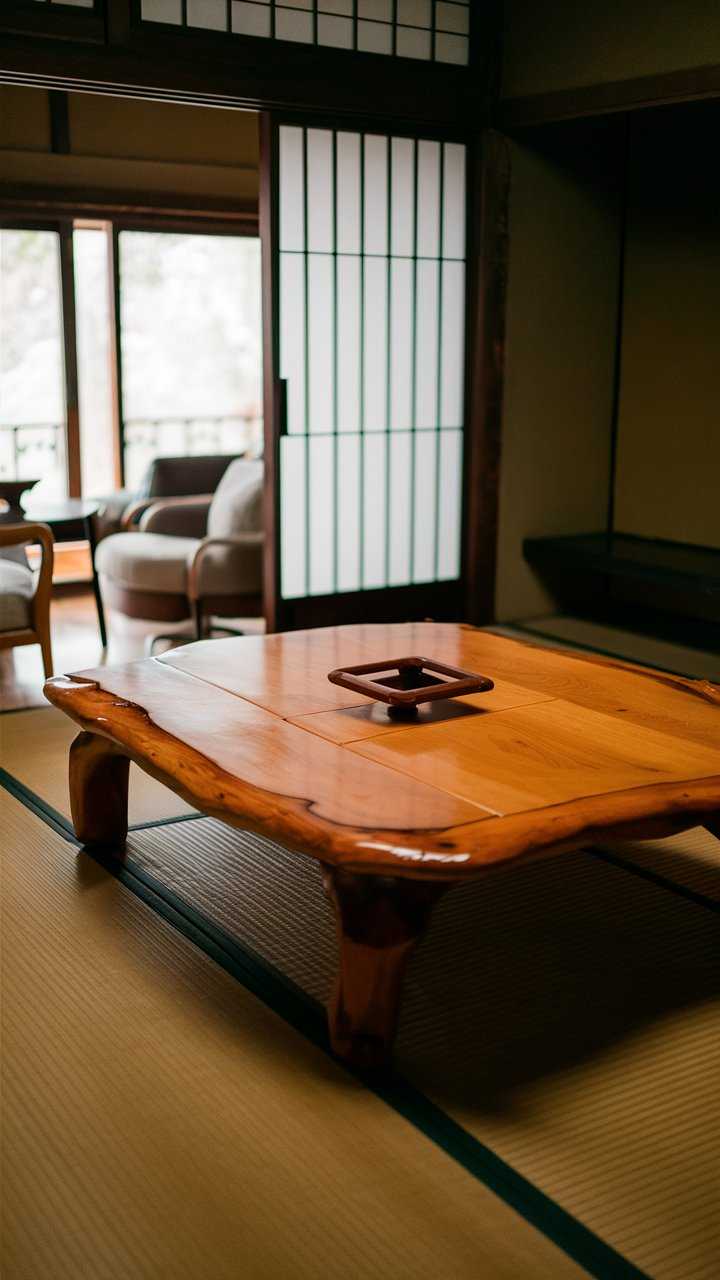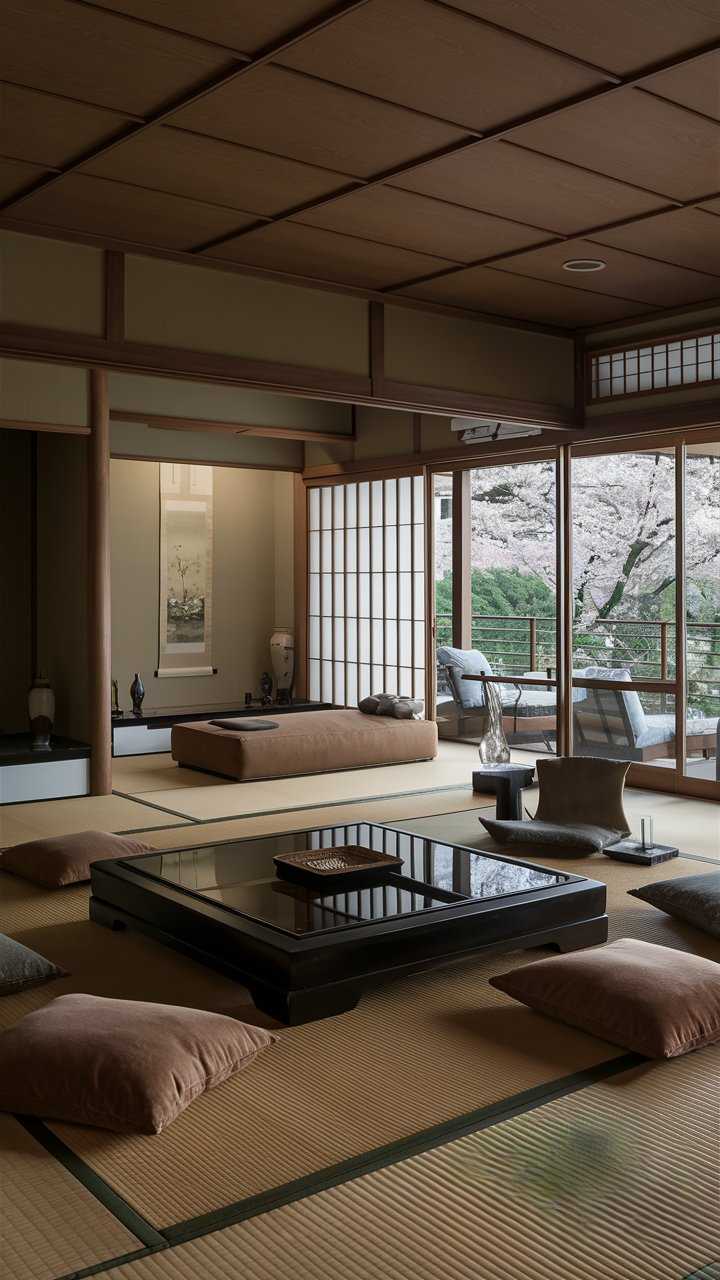Embrace Japanese Living Room Style: Zen Elegance
The Japanese living room style is all about peace and beauty. It mixes simple design with a love for nature. These rooms are like peaceful places that help you focus and relax. They follow simple rules and value the beauty of small flaws.
Using wood and bamboo, you can make a room that feels both cultural and personal. This style makes your room look better and feel calmer. It’s perfect for creating a place to meditate and think deeply.
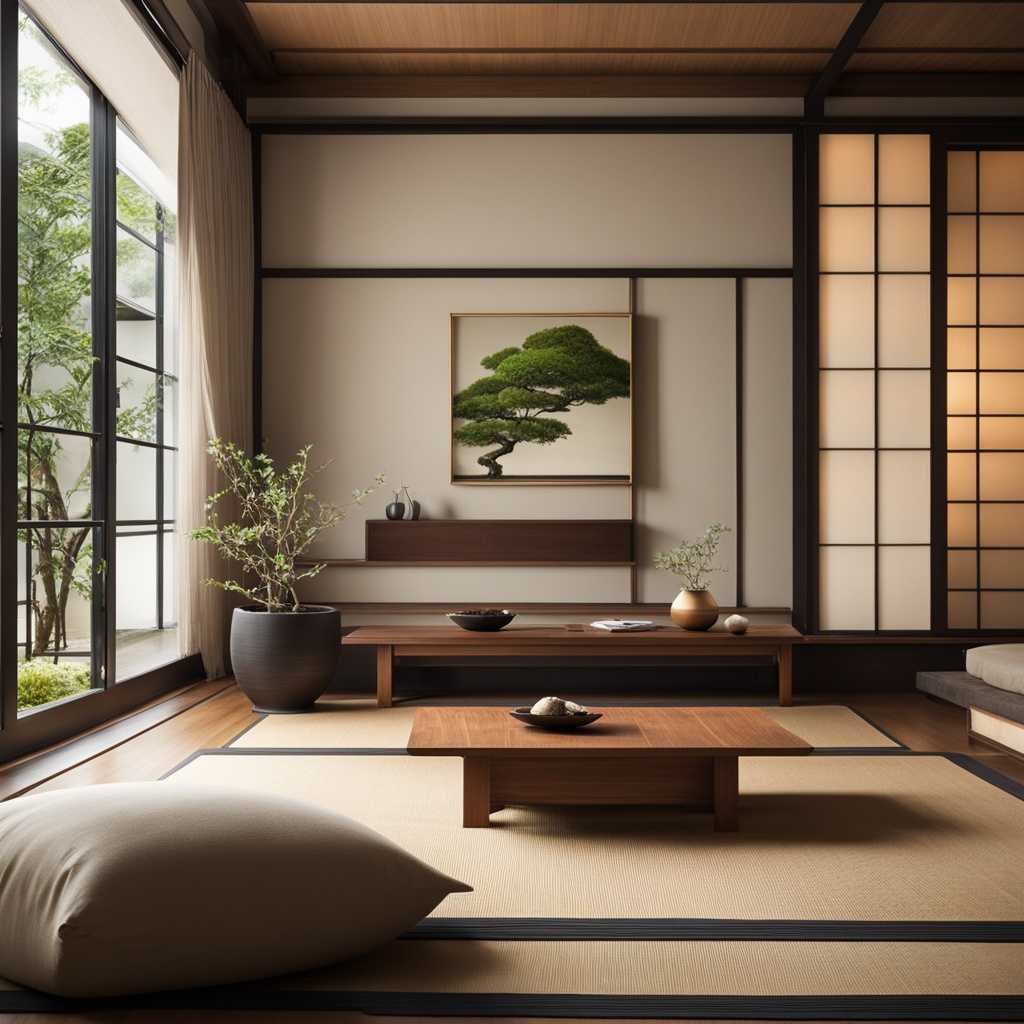
Key Takeaways
- Japanese living room style emphasizes minimalism and a connection to nature.
- Zen living rooms cultivate tranquility and mindfulness.
- Key principles include simplicity and wabi-sabi.
- Natural materials enhance the aesthetic and emotional appeal.
- This style transforms spaces into serene retreats.
The Essence of Japanese Interior Design
Japanese interior design is all about a minimalist aesthetic. It loves clean lines and open spaces. This makes every room peaceful and mindful. It’s all about simplicity and loving nature.
Using natural materials like wood, bamboo, and rice paper is key. These materials make the space look good and connect us to nature. Think light wooden floors, sliding rice paper doors, and bamboo decorations for a calm vibe.
The idea of wabi-sabi is big in this design. It’s about loving things for their flaws and age. So, every piece of furniture or decor is picked for its unique look, not just how perfect it is.
At the end, Japanese interior design aims to make us feel calm and peaceful. The mix of a minimalist look and natural materials creates a space that’s good for our minds and spirits.
Understanding Zen Philosophy in Home Decor
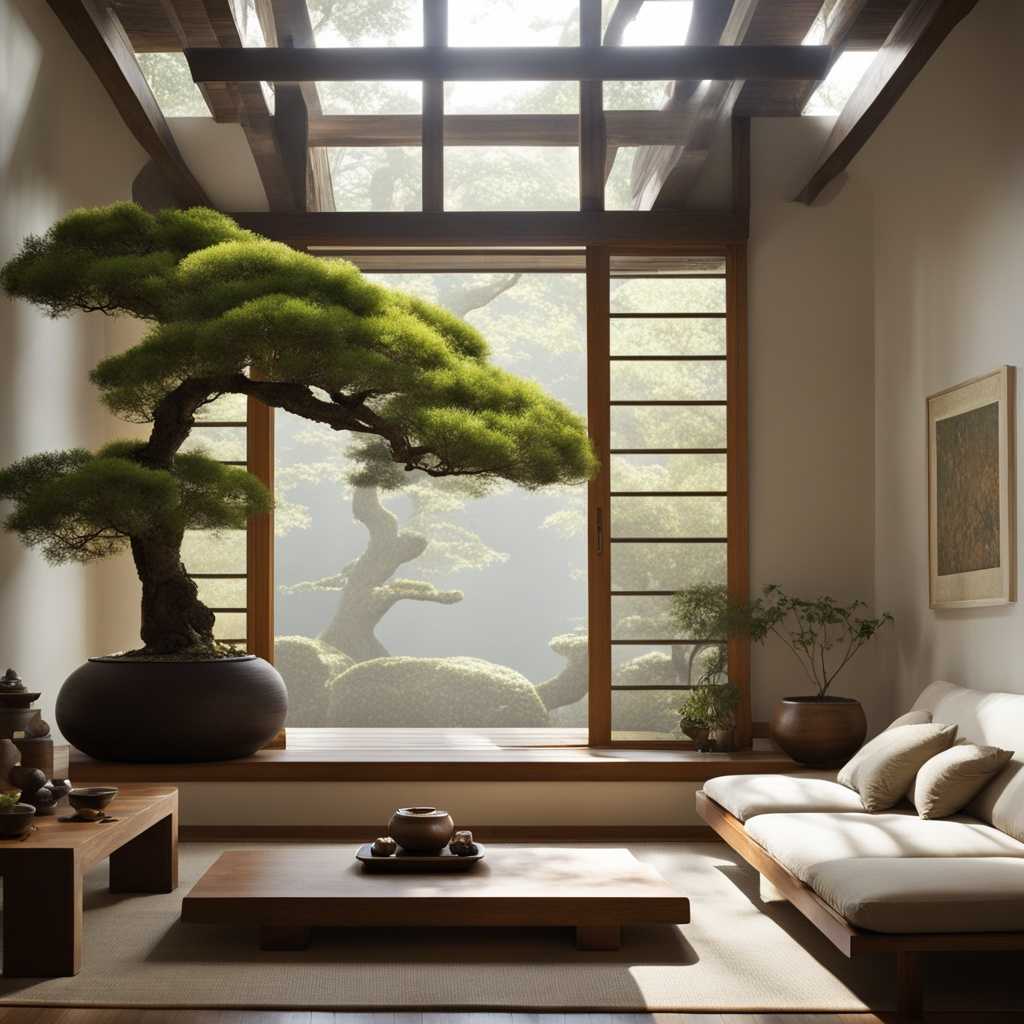
Zen philosophy is key in making Japanese interiors peaceful. It focuses on simplicity, harmony, and feeling close to nature. By using these ideas, people make homes that feel calm and support mindfulness.
Getting rid of clutter is crucial for peace. Every piece of decor, from furniture to accessories, is chosen with care. This thoughtful planning creates a calm space where there are fewer distractions and more peace. This approach improves the look of the space and makes people feel better.
Using natural materials adds to the calm feel of the space. Wood, stone, and bamboo bring the outdoors in, keeping with zen’s nature connection. This careful decor approach helps create a place for rest and living mindfully.
Key Concepts to Incorporate Into a Zen-Inspired Living Room
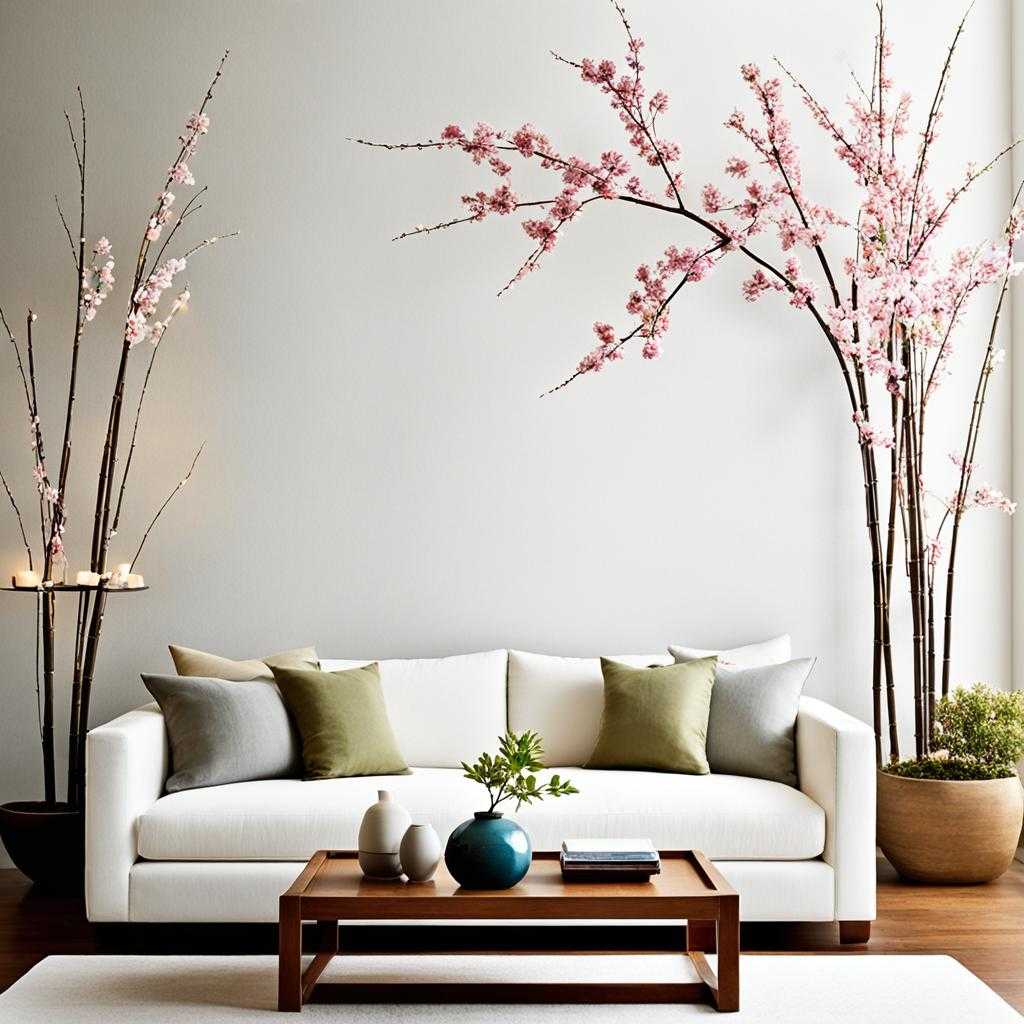
Creating a peaceful zen-inspired living room focuses on simplicity, elegance, and harmony. It means picking furniture with minimalist beauty. This furniture should have clean lines and simple shapes. This helps keep the room calm and peaceful.
Natural elements are key for a serene feel. Using wood, stone, and soft fabrics adds warmth. It’s also important to choose furniture that serves more than one purpose. This way, you get style without using too much space.
Light and color greatly affect the room’s mood. A calm color scheme makes the room feel more peaceful. Soft lighting adds to the calmness. Adding things like floral wallpaper can make you feel closer to nature. For ideas, check out different floral wallpaper designs that fit these themes.
Adding indoor plants or a zen garden connects you with nature. This brings life and calm to your living space. By focusing on these ideas, you can create a living room that’s both beautiful and peaceful.
Simplicity & Minimalism in Japanese Living Room Style
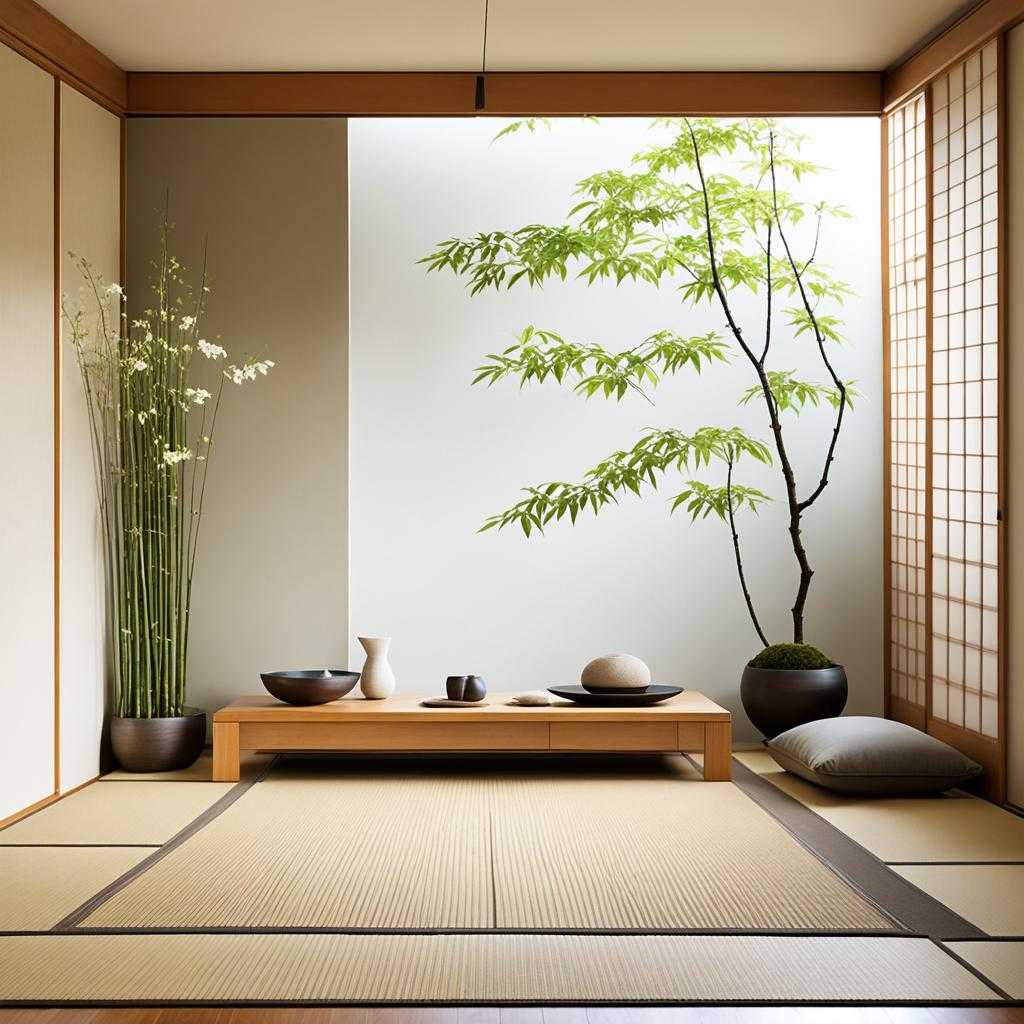
Simplicity and minimalism are key in Japanese living room design. They create a calm space away from the busy world. The focus is on an open, clean area. Every piece of furniture, like tatami mats and soft cushions, helps make the space feel solid.
Functional decor is crucial here, blending use with beauty. Things like hidden cabinets or furniture that does more than one job keep clutter away. This makes the room look better and feel peaceful.
- Low-profile furniture makes the space feel bigger.
- Neutral colors bring a calm vibe.
- Using natural materials keeps things simple.
Choosing simplicity in a minimalist living room leads to a better life. It mixes practical decor with smart design. This creates a quiet place that respects Japanese style.
Natural Materials: Connecting with Nature
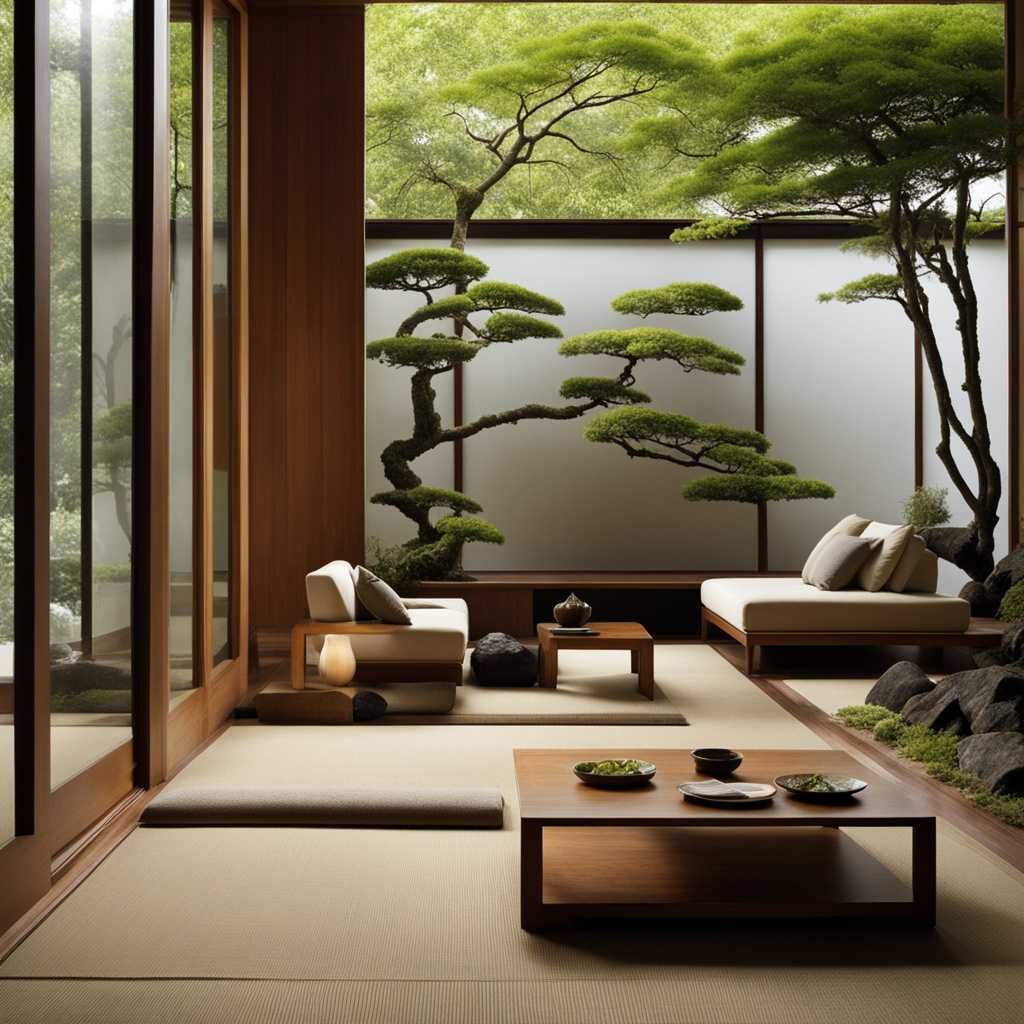
Using natural materials in a Japanese living room design creates a deep bond with nature. Wood, bamboo, stone, and rice paper add warmth and bring in earthy textures. These elements make the space feel calm and peaceful.
Choosing natural materials adds peace and authenticity to your home. Bamboo is strong and shows resilience. Stone gives a sense of stability. Rice paper lets soft light in, keeping us close to nature.
Thinking carefully about the materials you pick can turn a room into a peaceful retreat. Let’s see how these elements work together:
| Material | Properties | Benefits |
|---|---|---|
| Wood | Warmth, Variety | Creates inviting atmosphere, adds texture |
| Bamboo | Lightweight, Strong | Eco-friendly, versatile for furniture |
| Stone | Durable, Timeless | Instills permanence, enhances tranquility |
| Rice Paper | Translucent, Flexible | Softens light, promotes fluidity |
Neutral Color Palette for Serenity
A neutral color palette is key to a serene Japanese living room. Soft whites, beiges, and gentle greys create a calm vibe. These colors reduce distractions, fitting well with Japanese design’s minimalist style.
They also work well with natural materials, making the space feel welcoming and unified.
Adding different textures can make a neutral color palette more interesting. Using natural fabrics like linen or cotton adds warmth and coziness. This mix of calming colors and textures creates a peaceful space, perfect for escaping daily life.
| Color | Emotion | Use in Design |
|---|---|---|
| White | Purity, Clarity | Used for walls or large furniture pieces to enhance brightness |
| Beige | Warmth, Comfort | Ideal for upholstery and accessories that invite coziness |
| Grey | Calmness, Balance | Great for highlighting architectural features and flooring |
| Earthy Tones | Connection to Nature | Perfect for accent pieces that ground the space |
Using a neutral color palette brings tranquility and follows Japanese design principles. It focuses on subtle contrasts and inviting textures. This makes any living room a peaceful retreat.
Importance of Indoor Plants in Japanese Interiors
Indoor plants are key in Japanese interiors, linking indoor spaces with nature. They make living areas peaceful and calm. This connection with nature creates a sense of tranquility.
These plants do more than just look good. They improve air quality, lower stress, and boost focus. Adding plants like bonsai trees or ikebana arrangements makes your space more beautiful and peaceful.
Adding plants to a Japanese-style living area makes it a place to relax. Greenery refreshes the mind and spirit, reminding us of nature’s beauty. This focus on nature improves the mood and supports well-being every day.
Utilizing Shoji Screens and Fusuma Doors
Shoji screens and fusuma doors are key parts of Japanese interior design. They mix function with beauty. Shoji screens use a wooden frame and rice paper to let soft light in while keeping things private. They help make spaces feel calm and peaceful.
Fusuma doors are great for changing how a room looks. They slide open to change the room’s size, making it perfect for different needs. With fusuma doors, you can make a big area cozy or open it up for guests. This adds to the peaceful feel of your home.
Shoji screens and fusuma doors make rooms more flexible and in line with Japanese design. Using them adds a touch of elegance and makes your living space adaptable. They bring the calm of Zen philosophy into your home.


